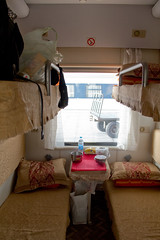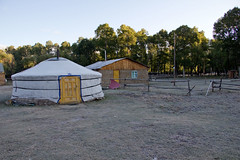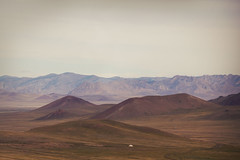The Vietnam/China border proved less intimidating than some of our guidebooks had promised. Our train dropped us off at 4 in the morning, so we sat outside on the steps of the Vietnamese customs building until it opened at 7. We heard stories of Chinese border guards rifling through your bags in search of (among other things) travel books whose maps dare to color Taiwan differently from the mainland. Happily, we didn't experience anything like that; one of the guards was even pretty friendly and tried to help us fill out our entry form.
After crossing a weird no-man's-land bridge over a river and passing through customs, your entry point in China is Hekou, which was pretty squalid, albeit more developed than the Vietnamese town across the river. We had a hard time changing our money at banks because it was a Sunday; a helpful young policeman tried to find us a working ATM while practicing his broken English on me, but we were unsuccessful-- you could tell he was pretty bored and was mostly just looking for an excuse to get out of the office.
Finally, we found a guy at the bus station who was not only pretty fluent in English, but was also willing to change our money at what was a decent rate considering he was the only game in town that day. We boarded the bus bound for Kunming, and proceeded to experience 10 hours of driving through some pretty incredible scenery: elevated freeways through steep mountains, supported by impossibly tall columns and winding through endless tunnels. As we got approached Kunming, we came across some bizarre, unearthly rock formations and rows of spherical trees unlike anything I've seen before. It felt like we'd entered another planet after the endless jungles and hills in Vietnam and Cambodia. We later realized that what we were looking at was Kunming's star tourist attraction, the Stone Forest National Park.
Apart from that, Kunming doesn't have much to offer tourists, but the city was pretty incredible to us at the time. I'd never even heard of the place before we started planning the trip, but with a population of 6 million, it was much bigger than any other place we'd been to up to that point. The high elevation and dry climate allowed for mid-August temperatures in the 60s and 70s, a welcome relief from the nonstop sticky heat up until then.
The city center was mostly very clean and modern-- so much so that we almost felt like we were back in Japan. There were lots of genuine high-end retail shops, and a few convincing fake ones, too. We saw two of those imitation Apple stores that have been getting some attention in the West -- I presume they were both just different enough to avoid getting shut down.
Very soon, we discovered a very different language barrier than what we'd experienced before. Vietnamese and Cambodians almost always knew a little English (i.e., just enough to get you to buy something), but the Chinese we dealt with either could speak very well or knew none at all. Having learned some Japanese in our two years living in Kanazawa, we were in the unusual-for-Western-tourists position of being able to read and write some Chinese while having zero listening or speaking ability. This proved very helpful at many points where we could have easily gotten lost, and allowed us to try things we might not have otherwise tried, but the differences between the languages sometimes made for some confusion and frustration.
Our next stop was Chengdu, and our plans to take a sleeper train out of Kunming were foiled by the mad rush of high tourist season. Our knowledge of Chinese characters allowed us to figure out that all train seats on the route we wanted were completely booked for the next 10 days. We ended up finding a company that sold us tickets for a sleeper bus, which did allow us to lay down for the night, but it was cramped, stuffy, and didn't allow you to wear your shoes anywhere inside, even on the floor of the urine-soaked squatter toilet.
Finally in Chengdu, we found another modern, relatively clean city, with hotter temperatures than Kunming, but also with a fantastic subway line that had just opened a year earlier, which clearly had borrowed liberally from the design of Singapore's own modern, efficient metro system. Chengdu is the largest city in Sichuan (also romanized as Szechuan) province; if you've heard of or tried this ultra-spicy brand of southern Chinese cuisine, this province and its capital city are the epicenter.
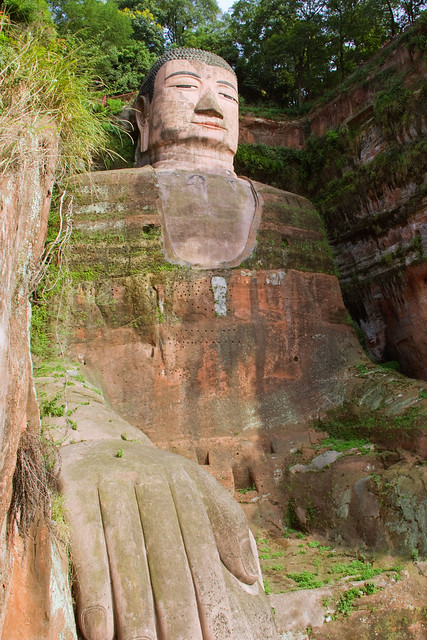
First up on our tourism docket was the Leshan Grand Buddha, the largest carved stone Buddha statue in the world, and, completed in 810 AD, the largest pre-modern statue in the world. With the help of a nice college student who was majoring in English at Chengdu University and happened to be returning home to Leshan on the same bus we were taking, we made it there and back entirely on public transit.
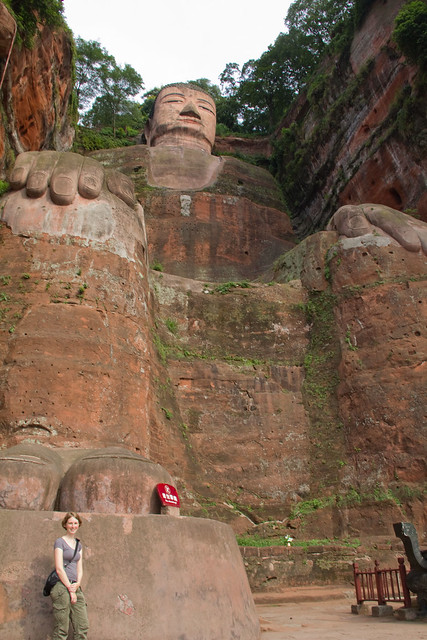
The Grand Buddha is probably the only tourist site on our trip so far that was actually
bigger than I had anticipated. It was carved into the side of a mountain at the banks of a river, and required a pretty steep hike down and up to get down to the Buddha's feet, where we took the requisite pictures alongside to give an idea of the full scale of the thing.
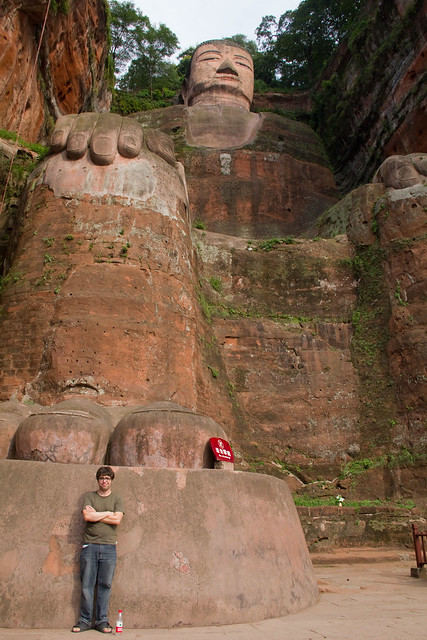
Our other big stop in Chengdu was the Panda Research Center, where we met a fellow American, a Vermonter named Alex who is living in China and speaks the language pretty well, much to our benefit. The center had 4 or 5 red pandas, who were playing and scurrying outside, and perhaps a dozen Giant pandas, who dislike the heat so much that they prefer to laze about in the cramped (but air-conditioned) indoors in the summer, despite the enormous outdoor enclosures they had access to.
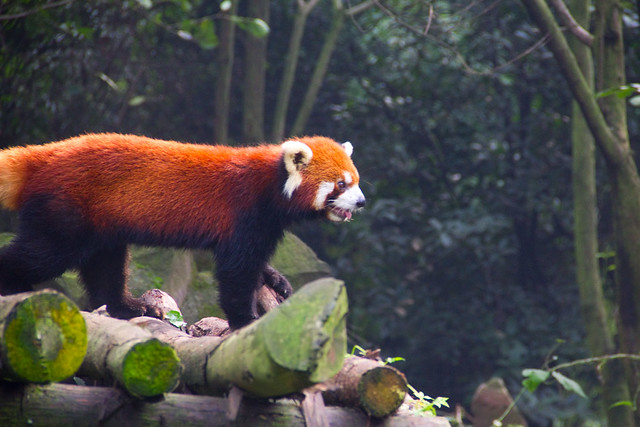
The most memorable sight was the dozen or so baby pandas, all born in the past three weeks, who were being kept in incubators to ensure their survival in the tough early months. We weren't allowed to take pictures of these guys, and it's just as well, because as infants they resemble shaved molerats and had a few more months before they grew enough hair to become recognizably panda-like.
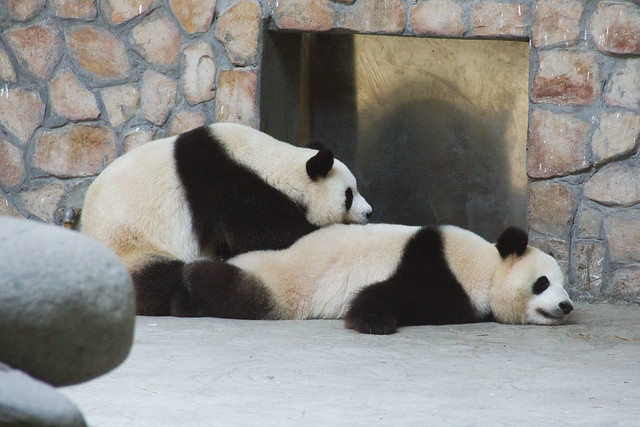
After Chengdu, we were stuck with another bus ride to Xian, during which a very stern lady attendant vigorously enforced the no-smoking policy with what amounted to a public shaming (which didn't stop the same guy from trying to light up two more times during the night, each time resulting in the lights being turned on and a few more minutes of arguing). Xian was a lot more like the China I was originally expecting-- hot, loud, dirty, congested, and (less expected) unrelentingly dusty, so much so that we came back caked in a layer of dust every time we ventured outside our hostel.
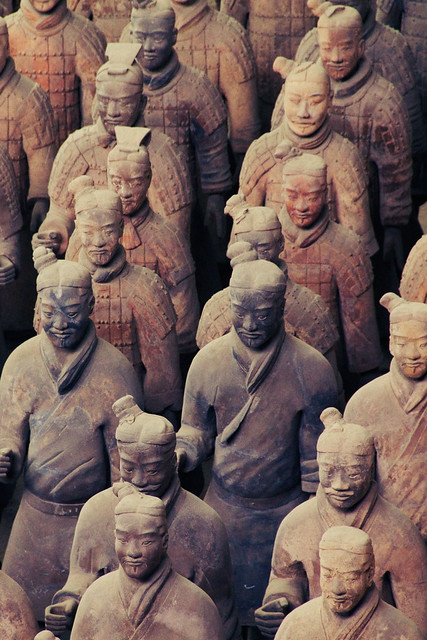
Xian was our base point for seeing the Terracotta Army. Our experience there was a little anticlimactic; not knowing any better, we first entered the first of three buildings, which contained the iconic pits with hundreds of warriors lined up. It was pretty big, but nowhere near what we'd imagined, so we figured the other two buildings had something more impressive. Wrong! Those were mostly just huge empty pits they'd already removed the soldiers from. Apparently the excavation is ongoing-- check back in a few years and they'll have a lot more soldiers lined up.
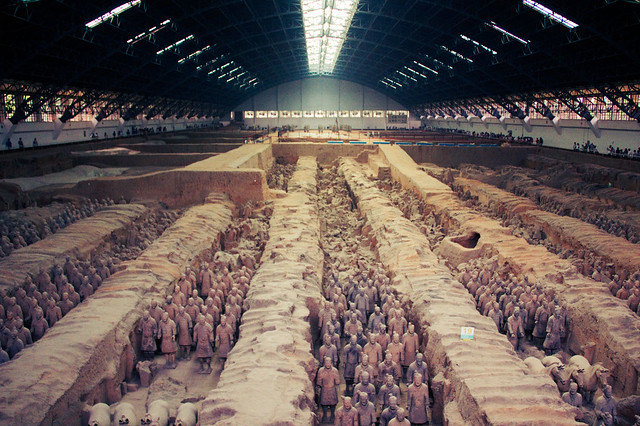
We were finally able to secure a sleeper train for our trip to Beijing, but it required us to spend three extra nights in Xian, whose dirt, heat, and grime started to wear out their welcome. Our 100+ year old hostel was nice enough, but apart from a dollar store with some hilarious knock-off products ("Horseman" razors, modeled after Gillette, and not Crest, but "Craot" toothpaste), Xian didn't have much going for it besides terrible air quality, horribly congested traffic, and a still-incomplete subway that was months away from being usable.
Finally, we got on the nicest non-Japanese train we'd ridden thus far, and arrived the next morning in Beijing, a city whose municipality is roughly the size of Belgium, and as such would be underserved by the descriptor "sprawling". The city center is served by an excellent (if at times inconveniently located) subway system that connected our hostel's area, a cute neighborhood centered around a large Buddhist temple, and the city's main shopping and business districts.
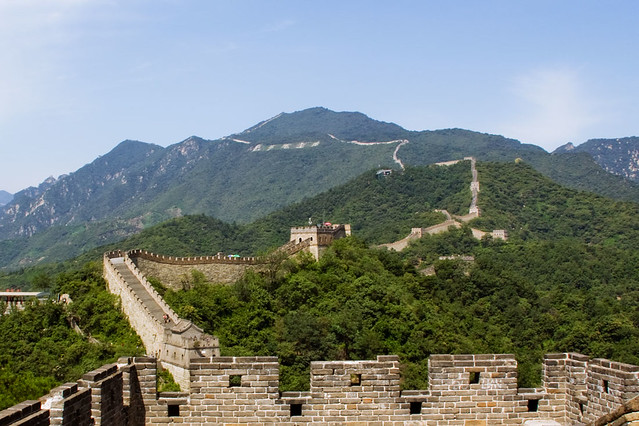
Our first full day was spent on a Great Wall excursion. The section we went to was slightly less packed with tourists and vendors than the famed section that Nixon (among others) had been photographed at. It did, however, boast a ski-style chairlift up to the steep mountaintop where the wall was located, and an exceedingly fun slide down the hill, where you pilot a little plastic seat with wheels and a single lever that functioned as both brake and accelerator.
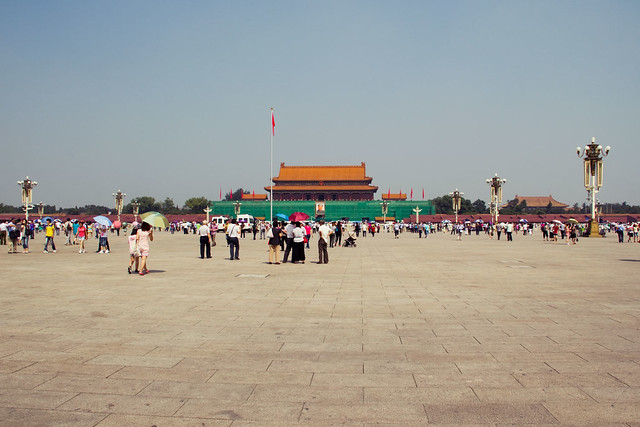
Our other big Beijing stop was Tiananmen Square, where a random Chinese guy insisted on taking his picture with us, solely because we were white people in China, and the Forbidden City, which was more impressive for its size and scope than the repetitive architecture.
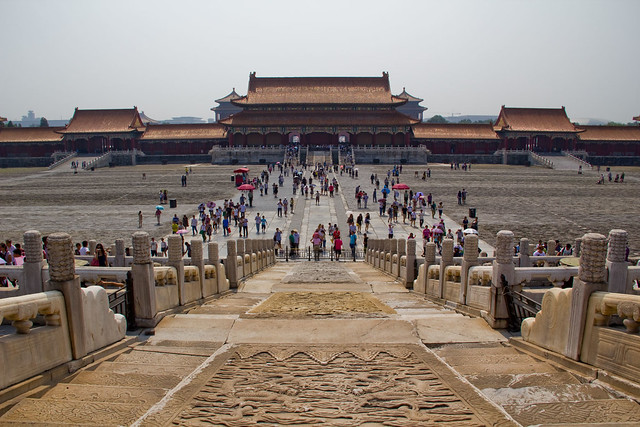
I can't speak for Andrea, but overall I left China with a much more positive impression than I was expecting to. The people and places were enjoyable more often than not, and much of the scenery we passed by was breathtaking. The government, on the other hand, was the source of some headaches, primarily in the form of the random bus inspections by the police and the (evadable) Internet censorship. Still, we were mostly left alone. Based on what I saw, I assume it's because the cops couldn't speak English and didn't want the hassle of dealing with us; the locals probably get it a lot worse than we did. The police intrusions got less and less frequent as we traveled further north, as well.
We rose early on our last morning in Beijing. After a brief subway ride, we arrived at the train station and boarded a train bound for Ulaanbataar, Mongolia, beginning the overnight climb into the desert steppes...
